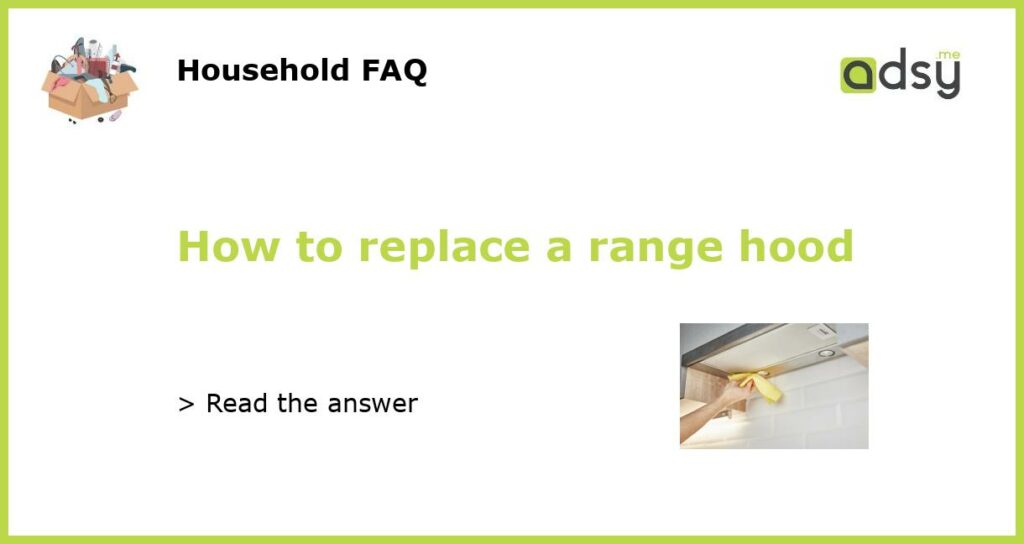Preparing for the Replacement
Before replacing your range hood, there are a few things you need to do to prepare for the process. Start by turning off the power to the range hood by switching off the circuit breaker that supplies electricity to it. This is a crucial step to ensure your safety during the replacement process. Next, gather all the necessary tools and equipment you will need, including a screwdriver, pliers, and a power drill.
Removing the Old Range Hood
The next step is to remove the old range hood. Start by disconnecting the electrical wires that supply power to the hood. This can usually be done by disconnecting the wires from the electrical box and removing any wire nuts or connectors. Make sure to carefully label each wire or take a photo of the wiring configuration before disconnecting, so that you can easily reconnect the wires to the new range hood later.
After disconnecting the electrical wires, you will need to remove the fasteners that hold the range hood in place. These are typically screws or brackets located at the top of the hood, often concealed by a decorative cover. Use a screwdriver or power drill to remove these screws or brackets, and gently lift the range hood off the wall or cabinet. It may be necessary to have someone assist you in holding the hood while you remove the fasteners.
Installing the New Range Hood
Once you have removed the old range hood, it’s time to install the new one. Begin by following the installation instructions provided by the manufacturer of the new hood. These instructions will vary depending on the specific model and design of your range hood.
Typically, you will need to attach any necessary mounting brackets or screws to the wall or cabinet where the range hood will be installed. Make sure to align these correctly and secure them tightly to ensure the stability of the hood. Next, carefully position the new range hood onto the installed brackets or screws, making sure it is level and centered.
After positioning the range hood, reattach the electrical wires that supply power to the hood. Follow the labeling or photos you took earlier to connect each wire to the corresponding terminal on the new range hood. Use wire nuts or connectors to secure the connections, making sure they are tight and secure.
Testing and Finishing the Installation
Once the new range hood is securely in place and the electrical connections have been made, you can turn the power back on to test the hood. Switch on the circuit breaker that supplies power to the range hood, and test the different fan speeds and lights to ensure they are working properly.
If everything is functioning correctly, you can now finish the installation by attaching any additional components, such as the chimney or ductwork, if applicable. Follow the manufacturer’s instructions for these components to ensure proper installation.
Cleaning and Maintenance
With the new range hood installed and working properly, it’s important to maintain it to ensure its longevity and optimal performance. Regularly clean the range hood filters and surfaces to remove grease and debris. Depending on the type of hood, filters may need to be replaced periodically. Check the manufacturer’s instructions for specific cleaning and maintenance guidelines.
Additionally, it’s a good idea to schedule regular inspections and maintenance with a professional if you are not comfortable or experienced with range hood maintenance. This will help ensure that the hood is functioning correctly and prevent any potential issues or breakdowns in the future.






